Zelenskyy unveils details of new peace plan, seeks Trump talks on territory
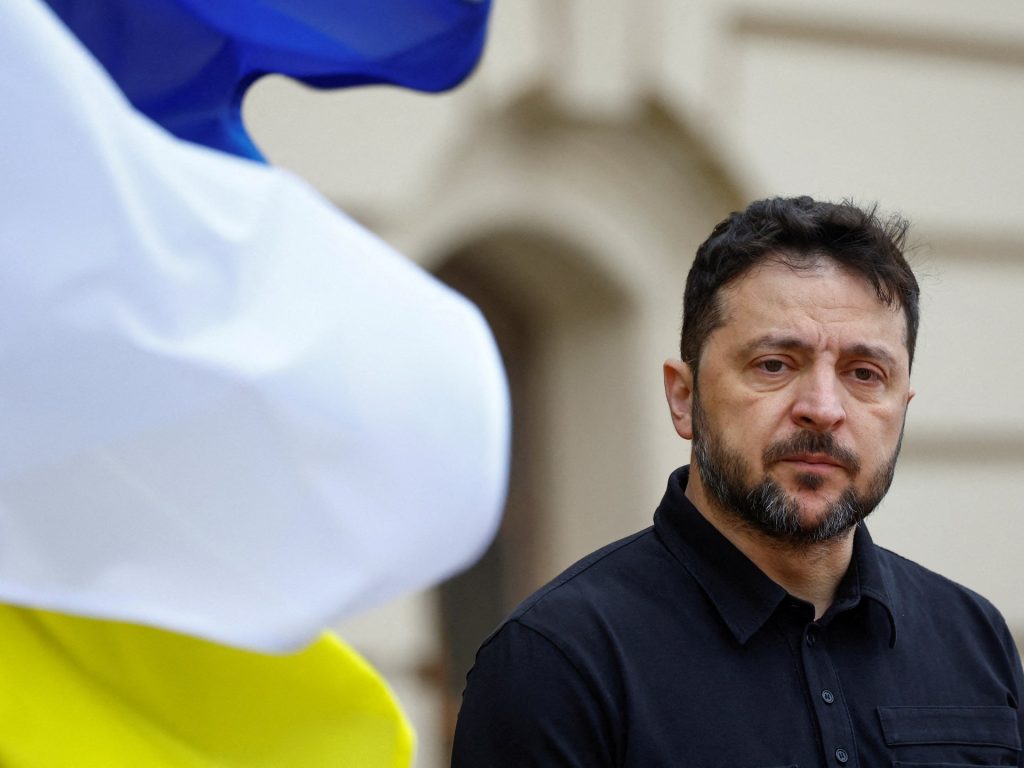
Ukrainian President Volodymyr Zelenskyy has called for a meeting with United States counterpart Donald Trump to discuss “sensitive issues” as negotiators inched closer to a final draft of a peace plan, nearly four years after Russia’s full-scale invasion of Ukraine. Zelenskyy told reporters in an embargoed briefing on Tuesday that US and Ukrainian negotiators had reached a consensus on several points aimed at ending the war, but issues, including territorial control of Ukraine’s eastern industrial heartland, remained unresolved. Recommended Stories list of 3 itemsend of list “We are ready for a meeting with the United States at the leaders’ level to address sensitive issues. Matters such as territorial questions must be discussed at the leaders’ level,” said the Ukrainian leader in comments released by his office on Wednesday. Zelenskyy’s briefing followed marathon talks in the US state of Florida on the 20-point plan, as Russia reviewed the latest draft. The Kremlin said on Wednesday that Russian President Vladimir Putin had been briefed by envoy Kirill Dmitriev, and that Moscow was formulating a response. Donbas ‘most difficult point’ Kyiv has been pressing Washington to modify Trump’s peace plan, which had initially been criticised as a Kremlin wish list, including demands that Ukraine cede more territory, accept curbs on its forces and give up on joining the NATO military alliance. Zelenskyy said the latest 20-point framework draft was a considerable evolution on the earlier plan, with Ukraine keeping its army at its current strength of 800,000 at peacetime, and additional documents agreed with the US and European allies providing robust security guarantees. Advertisement But despite the progress, Ukraine and the US have still not found common ground on territorial issues, particularly on control of the eastern Donetsk and Luhansk regions, known as the Donbas. This is “the most difficult point”, Zelenskyy said. While Kyiv has proposed “to remain where we are”, halting fighting at the current battle lines, Moscow wants it to withdraw troops from all of the eastern Donetsk region. Ukraine still controls about a quarter of the region and has rejected demands to give it up. With the Kremlin unlikely to abandon its maximalist territorial demands, the US has proposed a compromise arrangement that would transform disputed areas into free economic zones. Ukraine insists that any arrangement must be contingent upon a referendum. Additionally, there is still no agreement on the fate of the Zaporizhzhia nuclear power plant, Zelenskyy said. Europe’s largest nuclear power plant is located in territory under Russian military control near the front line. The president said Kyiv was proposing a small economic zone there. “We are saying: If all regions are included and if we remain where we are, then we will reach an agreement,” Zelenskyy said. “But if we do not agree to remain where we are, there are two options: Either the war continues, or something will have to be decided regarding all potential economic zones.” The document also proposes the withdrawal of Russian forces from the regions of Dnipropetrovsk, Mykolaiv, Sumy and Kharkiv, and that international troops be stationed along the contact line to monitor the implementation of the agreement. “Since there is no faith in the Russians, and they have repeatedly broken their promises, today’s contact line is turning into a line of a de facto free economic zone, and international forces should be there to guarantee that no one will enter there under any guise,” Zelenskyy said. Reporting from Kyiv, Al Jazeera’s Audrey MacAlpine said the key question of territory appears to still be “on the table”, adding that “there has not been anything fleshed out when it comes to exactly how to answer that question.” She said: “What it offers is a bit more colour in the form of sub-clauses of how peace might be achieved. “They propose things, for example, like a … monitoring system of the front line. If we look back to the Minsk agreements around 2015, there were issues about how to monitor ceasefire infractions between Russia and Ukraine, so this has historically been an issue of contention. Advertisement “He [Zelenskyy] has also said that there are some things that we are probably not ready for, meaning Ukraine, and [he is] sure there are things that Russians are not ready for either, suggesting that both sides may need to make some concessions on these key issues.” EU membership, reconstruction funds The draft also ensures that Ukraine will be provided with “strong” security guarantees that mirror NATO’s Article 5, which would obligate Ukraine’s partners to act in the event of renewed Russian assault. Zelenskyy said a separate bilateral document with the US will outline these guarantees. This agreement will detail the conditions under which security will be provided and will establish a mechanism to monitor the ceasefire. The mechanism will use satellite technology and early warning systems to ensure effective oversight and rapid response capabilities. “The mood of the United States of America is that this is an unprecedented step towards Ukraine on their part. They believe that they are giving strong security guarantees,” he said. The draft contains other elements, including Ukraine becoming a European Union member at a specifically defined date, holding elections after the signing of the agreement and accelerating a free trade deal with the US. Also included are funds for reconstruction and economic investment. “Ukraine will have the opportunity to determine the priorities for distributing its share of funds in the territories under the control of Ukraine. And this is a very important point, on which we spent a lot of time,” Zelenskyy said. Adblock test (Why?)
Stokes concerned for England’s mental wellbeing on Ashes tour of Australia

Captain Ben Stokes said protecting England players’ welfare was his top concern amid claims of excessive drinking on a mid-Ashes beach break, without directly addressing the allegations. Stokes was peppered with questions on Wednesday ahead of the Boxing Day Test in Melbourne about the team’s behaviour at Noosa between the second and third Tests after British media reports compared it with a “stag-do”. Recommended Stories list of 4 itemsend of list Unverified social media footage appeared to show opener Ben Duckett drunk and disoriented. Their disastrous five-Test tour, which has seen Australia take an unassailable 3-0 lead, took another hit on Wednesday when pace spearhead Jofra Archer was ruled out of the rest of the series with a side strain. England cricket chief Rob Key on Tuesday pledged to investigate the drinking claims, while the England and Wales Cricket Board said in a statement it was intent on establishing the facts. Stokes, whose team have already lost the Ashes, said his main concern was the players’ mental welfare and to ensure they were ready for the Melbourne Test starting Friday. “I’m obviously aware of the reports and everything circulating around right now,” Stokes said. “My main concern is my players, and how I handle this moment is the most important thing to me. “The welfare of everyone in there, and probably some certain individuals as well, is the most important thing to me right now as England captain. “It’s never a nice place to be in when not only the media world, but also the social media world, is piling on top of you,” he added. Advertisement “It’s a very tough place to be in as an individual. As an individual, when you know you’ve got the support of the people who are sort of leaders, in a sense, it’s very good to know that you’ve got that support.” Asked directly whether his teammates had “done anything wrong in Noosa”, Stokes replied: “I’ve just answered everything there.” Stokes calls for focus as spotlight increases on England England went to Queensland tourist resort Noosa after losing the first two Tests in Perth and Brisbane heavily. They spent several days on the sand and around restaurants and bars before travelling to Adelaide, where they lost the third Test as Australia retained the Ashes. Britain’s Daily Telegraph reported that “after drowning their sorrows after the Brisbane Test, it is no exaggeration to say some, certainly not all, players drank for five or six days”. It added that players “did nothing outrageous in Noosa” but there was concern over the level of drinking, with England’s professionalism already under the microscope after their limited preparations. England captain Ben Stokes, right, and coach Brendon McCullum are both under pressure following the side’s failures in Australia [Gareth Copley/Getty Images] Stokes conceded that when a side was losing, there would be scrutiny, and “rightly so”. “When you are 3-0 down you don’t really have a leg to stand on but we’ve got two games of cricket to play. That’s what we have to focus on,” he said. “We haven’t won a game in Australia for a long, long time.” England have gone 18 Tests since winning a match in Australia, dating back to their last series victory there in 2010-11. Their capitulation in this series in 11 days of play is the joint second quickest in more than a century, since the 1921 Ashes was completed in eight days. Making matters worse, Archer will take no further part in the tour, with Gus Atkinson replacing him in Melbourne. The under-performing Ollie Pope paid for his poor form at number three, with Jacob Bethell taking over in the only other change. England’s Test woes in contrast to Australia’s Ashes high Bowling with the wicketkeeper standing up to the stumps can bruise a fast bowler’s ego, but Australia paceman Scott Boland said Alex Carey’s stellar glovework in the ongoing Ashes series has helped him grow comfortable with it. Carey’s wicketkeeping masterclass has been a key factor in Australia’s unassailable lead in the five-match series, and the 34-year-old was particularly impressive in the second Test at the Gabba, where he stood up to Boland and Michael Neser. Advertisement With the wicketkeeper breathing down their necks, English batters were pretty much confined to the crease, which meant the home bowlers did not really need to vary their length. “I’ve just never really bowled to the keeper up to the stumps before,” Boland told reporters ahead of the fourth Test. “Everyone wants to be a fast bowler, and you don’t really like the keeper up to the stumps. “But I’ve seen over the last month how effective it is and how still I can keep their batters by Alex being up to the stumps.” Wicketkeepers typically stand farther back from the stumps when facing fast bowlers to give themselves more time to react to the high speed and bounce of the ball, reducing the risk of missed catches. Even from close range, Carey showed tremendous reflexes to pouch a thick edge from Ben Stokes after the England captain had nicked a Neser delivery in the second innings. Dismissals like that gave confidence to Boland that he could continue bowling his edge-inducing length balls regardless of where Carey stood. “I just need to trust that the length balls I bowl to try and nick guys off is the same length I bowl when he’s up to the stumps or back,” the 36-year-old said. “The Gabba was pretty bouncy and he was up to the stumps for a bit of it and catching balls above waist-high and I bowled a bouncer and he caught that, so I have full trust in him up there.” Former Australia wicketkeeper Ian Healy called Carey “clearly the best in the world”, while teammate Steve Smith termed him a “freak”. Adblock test (Why?)
Venezuela passes law enacting harsh penalties for supporters of US blockade

Government of President Nicolas Maduro denounces US seizure of oil tankers as illegal acts of piracy. By News Agencies Published On 23 Dec 202523 Dec 2025 Click here to share on social media share2 Share Venezuela’s National Assembly has passed a law enacting harsh penalties for those who support or help finance blockades and acts of piracy, including up to 20 years in prison. The legislation was passed on Tuesday after the United States seized oil tankers linked to Venezuela, acts that the government of President Nicolas Maduro has denounced as lawless acts of piracy. Recommended Stories list of 3 itemsend of list “This law seeks to protect the national economy and avoid the erosion of living standards for the population,” Giuseppe Alessandrello said while presenting the law before the National Assembly, which is controlled by Maduro’s ruling party. The US has carried out a series of increasingly aggressive measures over the past several months, deploying sizeable military forces to Latin America, seizing oil tankers, killing dozens of people in military strikes on what it says are drug-trafficking boats and threatening land strikes on Venezuela itself. The legality of some of those acts, such as the seizures of oil tankers in international waters, is contested. Others, such as the strikes against alleged drug traffickers, are widely considered illegal. “We are in the presence of a power that acts outside of international law, demanding that Venezuelans vacate our country and hand it over,” Samuel Moncada, Venezuela’s representative at the United Nations, told the UN Security Council during a meeting on Tuesday. “The threat is not Venezuela,” he added. “The threat is the US government.” China and Russia also criticised US actions, with Russian Ambassador Vassily Nebenzia saying that the Trump administration was creating a “template” for the use of force that could be used against other Latin American countries in the future. Advertisement The Wall Street Journal reported on Tuesday that the US military had moved special operations aircraft and cargo planes with troops into the Caribbean this week. “We have a massive armada formed, the biggest we’ve ever had and by far the biggest we’ve ever had in South America,” Trump told reporters on Monday. Maduro has said the US is seeking to topple his government and seize control of Venezuela’s large oil reserves, which members of the Trump administration have falsely claimed rightfully belong to the US. Trump said on Monday that the US would retain the oil seized from the tankers as well as the tankers themselves. Addressing the UN Security Council, US ambassador Mike Waltz said that oil sales were a “primary economic lifeline for Maduro and his illegitimate regime”, repeating the largely unfounded claim that Maduro oversees a vast criminal enterprise that traffics drugs to the US. “The single most serious threat to this hemisphere, our very own neighbourhood and the United States, is from transnational terrorist and criminal groups,” Waltz said. The US pressure campaign has become a useful pretext for the Venezuelan government’s efforts to crack down on internal dissent. Rights groups said the Maduro government has become more repressive since a presidential election in July 2024, in which Maduro claimed victory despite widespread doubts about the credibility of the results. The opposition has maintained it was the true winner, and few countries have recognised Maduro’s victory. Adblock test (Why?)
Belgium joins South Africa’s genocide case against Israel at ICJ
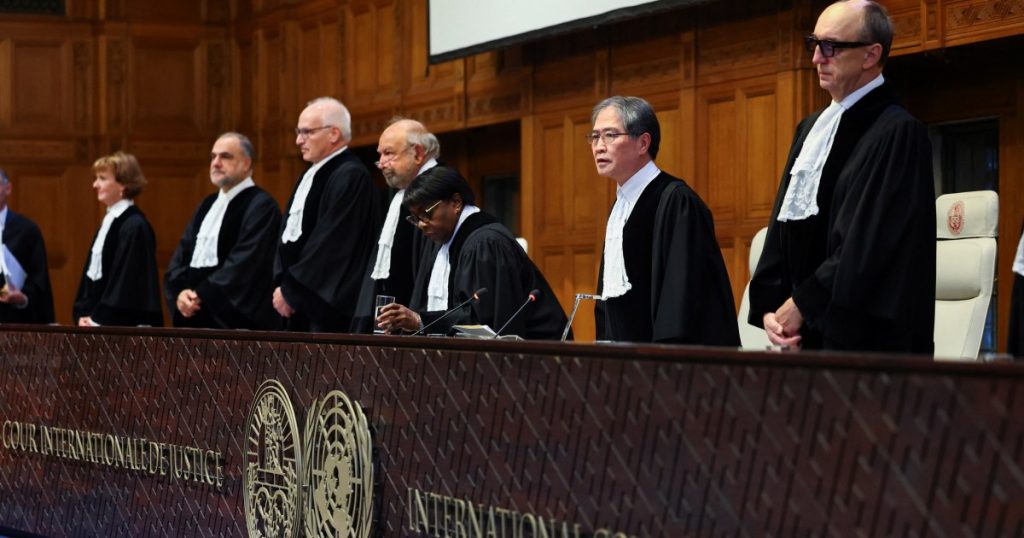
Other countries, including Brazil, Colombia, Ireland, Mexico, Spain and Turkiye, have already joined the case in The Hague. Published On 23 Dec 202523 Dec 2025 Click here to share on social media share2 Share Belgium has formally joined the case launched by South Africa at the International Court of Justice (ICJ) alleging Israel is committing genocide in the Gaza Strip. In a statement on Tuesday, the ICJ – The Hague-based highest court of the United Nations – said Belgium had filed a declaration of intervention in the case. Recommended Stories list of 4 itemsend of list Other countries, including Brazil, Colombia, Ireland, Mexico, Spain and Turkiye, have already joined the proceedings. South Africa brought the case in December 2023, arguing that Israel’s war in Gaza violates the 1948 UN Convention on the Prevention and Punishment of the Crime of Genocide. Israel has rejected the allegations and criticised the case. While a final ruling could take years, the ICJ issued provisional measures in January 2024 ordering Israel to take steps to prevent acts of genocide in Gaza and to allow unimpeded access for humanitarian aid. The court’s orders are legally binding although it has no direct mechanism to enforce them. The ICJ also said Israel’s presence in occupied Palestinian territory is unlawful and its policies amount to annexation. Israel has continued its assaults in Gaza and the occupied West Bank despite the rulings and growing international criticism while advancing plans to seize large parts of Palestinian territory. Meanwhile, the United States and several of its European allies continue to provide military and financial support to Israel. Washington has rejected the merits of South Africa’s case, and US lawmakers have criticised the country and issued threats against it. Advertisement The US has also imposed sanctions on members of the International Criminal Court (ICC), which has issued arrest warrants against Israeli Prime Minister Benjamin Netanyahu and former Defence Minister Yoav Gallant. Belgium was also among a group of countries that recognised the State of Palestine in September. Nearly 80 percent of UN member states now recognise Palestine. Since a ceasefire began on October 10, the Palestinian Ministry of Health in Gaza said, Israel has killed at least 406 Palestinians and injured 1,118 in the enclave. Since the start of the war on October 7, 2023, the ministry said, at least 70,942 Palestinians have been killed and 171,195 wounded. Adblock test (Why?)
How will Syria deal with its growing security challenges?
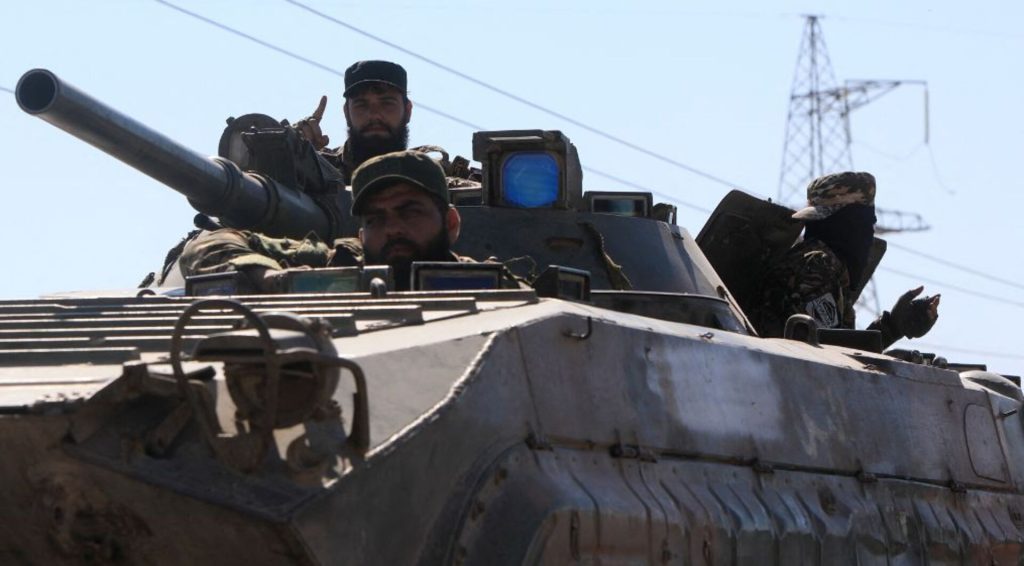
Renewed fighting between army and SDF highlights volatility. As the year comes to an end, a deal between the Syrian government and the Kurdish-led Syrian Democratic Forces was expected to come into force. Instead, fighting has erupted between the two sides in the northern city of Aleppo. They later agreed to stop the fighting, while blaming each other for the violence. That deal was supposed to lead to the SDF integrating with the army, but it is stalling on how that should be implemented. This renewed tension comes as Damascus faces other threats, ranging from ISIL (ISIS) to recurrent conflicts with the Druze community and continuing attacks by Israel. So what does this complex security situation mean for Syria, a year after the fall of Bashar al-Assad? Presenter: Dareen Abughaida Guests Haid Haid – Researcher at Chatham House Steven Heydemann – Professor and Middle East Studies programme director at Smith College Omer Ozkizilcik – Nonresident fellow for the Syria project in the Atlantic Council’s Middle East programme Published On 23 Dec 202523 Dec 2025 Click here to share on social media share2 Share Adblock test (Why?)
Salah scores goal as Egypt rally to win against Zimbabwe at AFCON 2025

Mohamed Salah puts Liverpool controversy behind him with dramatic winner against Zimbabwe in their AFCON opener. By News Agencies Published On 23 Dec 202523 Dec 2025 Click here to share on social media share2 Share Mohamed Salah snatched a dramatic stoppage-time winner as Egypt came from behind to beat Zimbabwe 2-1 in their first fixture at the Africa Cup of Nations (AFCON) finals in Morocco on Monday. Egypt’s captain, starting his first game after four successive matches on the bench at Liverpool, fired home a left-footed effort in the 91st minute to earn the seven-time champions a late victory after Zimbabwe had stunned them by going ahead in the first half. Recommended Stories list of 3 itemsend of list Egypt laid an early siege to Zimbabwe’s goal, but it was the underdogs who netted first through Prince Dube in the 20th minute. It was left to Egypt’s Premier League contingent of Omar Marmoush, who equalised in the 64th minute, and talisman Salah to see them to a last-gasp victory. Salah had come into the tournament in Morocco under the spotlight following a fiery outburst after being dropped by the Premier League champions, and struggled to find his rhythm for most of the match at the Grande Stade d’Agadir. When it counted, however, he swept home the winner to see Egypt join South Africa, who beat Angola 2-1 earlier in Marrakesh, at the top of Group B. It was as much as Egypt deserved, breaking a run of six successive draws over the last two editions of the Cup of Nations. They had four good chances in the opening 10 minutes as they put Zimbabwe under intense pressure but fell behind when Emmanuel Jalai fed the ball inside for Dube, who turned in possession and placed his effort into the bottom left corner. It could have been 2-0 as Daniel Msendami’s pace set up a scrambled chance for Washington Navaya that Egypt goalkeeper Mohamed El Shenawy managed to gather before it could be bundled over the line. Salah, centre, puts Egypt ahead 2-1 in stoppage time [Stringer/Anadolu via Getty Images] Marmoush sole effect Marmoush equalised in the 64th minute, picking up a long pass on the left wing before cutting inside and firing home with his right foot from an acute angle for a superb solo goal. Advertisement “We created many chances without being able to score early, but in the end everything went well,” Marmoush said. “We kept a good mindset and finished the match strongly. We will learn from everything that happened in tonight’s game.” Substitute Ahmed Zizo should have headed home at the back post from Mohamed Hamdy’s inviting cross but put his effort wide, and missed again four minutes from the end when Salah teed him up with a good chance. It was left to Salah to secure the three points, holding off his marker to bring the ball under control before steering it home for his first goal since early last month. In the next set of Group B fixtures, Egypt meet South Africa in Agadir on Boxing Day while Zimbabwe and Angola clash on Friday in Marrakesh. Adblock test (Why?)
Russia-Ukraine war live: One killed in Kyiv, dozens injured across Ukraine

blinking-dotLive updatesLive updates, The large-scale Russian attacks come two days after US-led peace talks end in Miami. Published On 23 Dec 202523 Dec 2025 Click here to share on social media share2 Share Adblock test (Why?)
Video: Maduro rejects Trump’s warning against ‘acting tough’

NewsFeed US President Donald Trump warned Nicolas Maduro to ‘not play tough’ and to step down on Monday, while the Venezuelan leader said Trump should focus on the issues in his own country. Trump told reporters the US will keep 1.9 million barrels of oil that were seized near Venezuela in December. Published On 23 Dec 202523 Dec 2025 Click here to share on social media share2 Share Adblock test (Why?)
At least three killed in Israeli attack on southern Lebanon’s Sidon
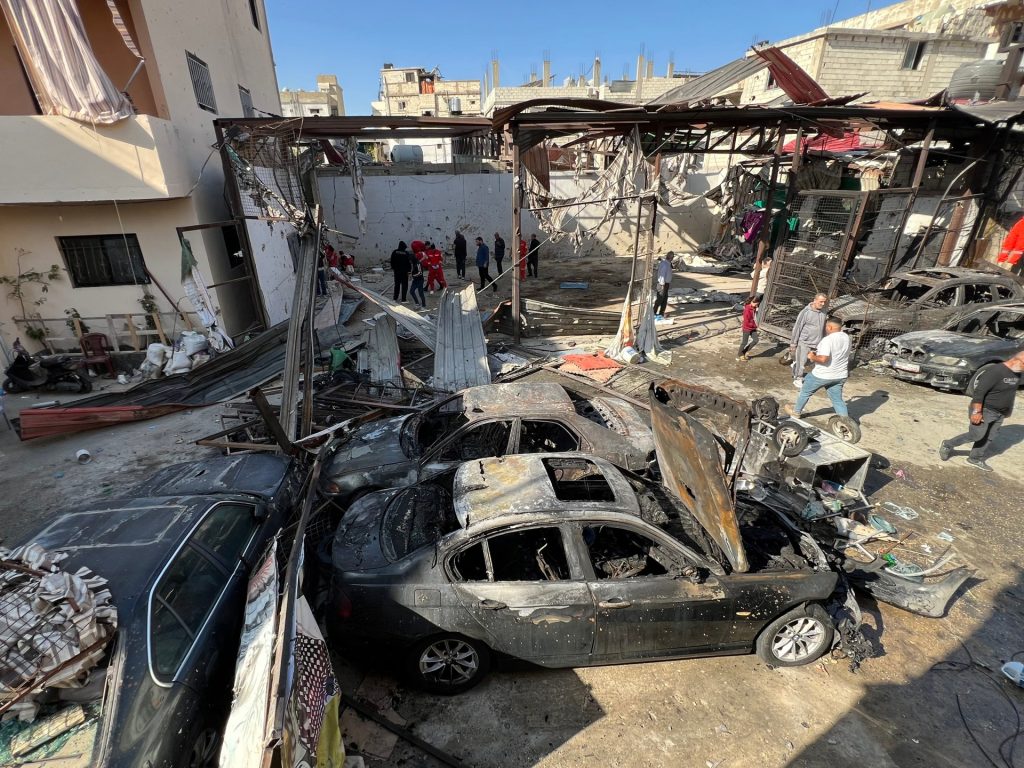
Deadly Israeli air strike is latest in Israel’s near-daily violations of 2024 ceasefire agreement with Hezbollah. At least three people have been killed in an Israeli attack near the southern Lebanese city of Sidon, the country’s National News Agency (NNA) is reporting, in the latest Israeli breach of a ceasefire agreement with Hezbollah. Lebanon’s Ministry of Health said on Monday that the three people were killed in an Israeli air strike on a vehicle on Quneitra Road in the southern Sidon district, according to NNA. Recommended Stories list of 4 itemsend of list The Israeli military said in a statement that it had targeted Hezbollah members in the Sidon area, without providing further details. The deadly strikes come a day after another Israeli attack on southern Lebanon on Sunday killed one person and wounded two others. The Israeli army said it killed a Hezbollah member in that attack. Israel has repeatedly violated the November 2024 ceasefire agreement with the Lebanese group, carrying out near-daily attacks across Lebanon, particularly in the south, that have drawn widespread condemnation. Between January and late November, Israeli forces carried out nearly 1,600 strikes across Lebanon, according to data compiled by the Armed Conflict Location and Event Data Project (ACLED). Late last month, the United Nations said at least 127 civilians had been killed in Israeli attacks on Lebanon since the ceasefire took effect, prompting a call from the United Nations human rights office for a “prompt and impartial” investigation. Delegations meet in southern Lebanon Israel’s attacks have continued despite the November 2024 ceasefire agreement, which includes provisions for Hezbollah’s disarmament in parts of southern Lebanon and the withdrawal of Israeli forces. Advertisement On Saturday, Prime Minister Nawaf Salam said Lebanon was close to completing the disarmament of Hezbollah in the area south of the Litani River. That is a key provision of UN Security Council Resolution 1701, which designates the zone between the Litani River and the Israeli border as an area where only the Lebanese army and UN peacekeepers are permitted to operate. Hezbollah has long rejected calls for full disarmament, saying its weapons are necessary to defend Lebanon against Israeli attacks and occupation. Hezbollah leader Naim Qassem has consistently said the group will end its military presence south of the Litani River in line with the ceasefire, but insists it will retain its weapons elsewhere in Lebanon. Under the 2024 ceasefire agreement, Israeli forces were also required to withdraw fully from southern Lebanon, south of the Litani River, by January. But Israeli troops have only partially pulled back and continue to maintain a military presence at five border outposts inside Lebanese territory. Hezbollah officials have previously said the group would not fully implement its commitments under the ceasefire while Israeli forces remain deployed in southern Lebanon. Meanwhile, a committee overseeing the ceasefire agreement continues to hold talks in southern Lebanon as Israel and the United States increase pressure on Hezbollah to disarm. Civilian and military delegations from Israel and Lebanon met in the southern town of Naqoura on Friday in closed-door discussions. Following the talks, Lebanese President Joseph Aoun met with diplomat Simon Karam, who has been appointed as Lebanon’s chief civilian negotiator. Hezbollah has been critical of the appointment of Karam, who has previously served as the ambassador of Lebanon to the US. In a statement, the Lebanese presidency said Aoun stressed that enabling tens of thousands of displaced Lebanese civilians to return to their villages and homes was “an entry point for addressing all other details” of the agreement. Aoun said the committee’s next meeting is scheduled for January 7. He also welcomed a separate diplomatic agreement reached in Paris between the US, France and Saudi Arabia to organise an international conference in early 2026 to support the Lebanese army and internal security forces. Adblock test (Why?)
Cambodia-Thailand fighting continues as ceasefire talks loom
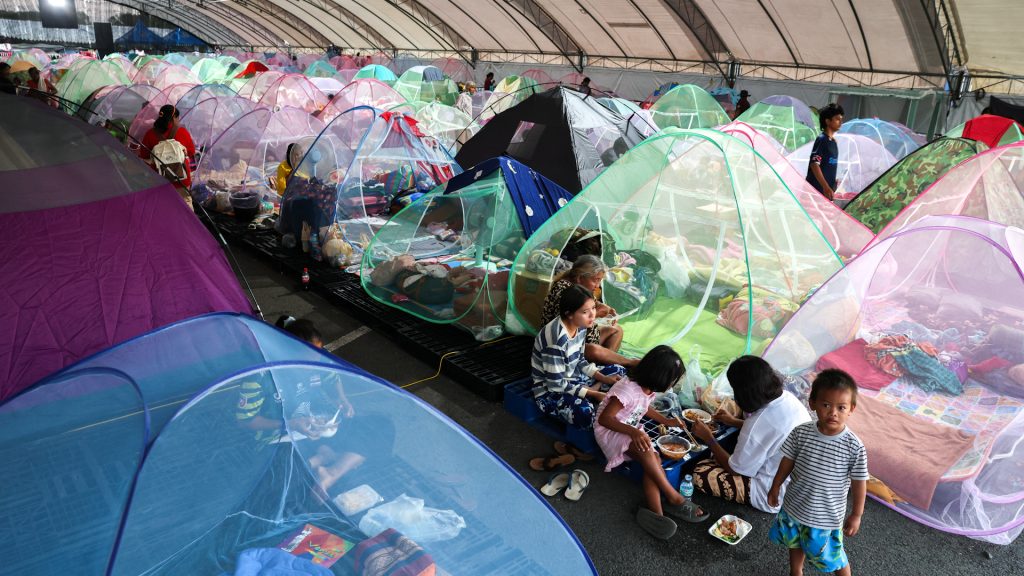
NewsFeed Fighting between Cambodia and Thailand continues despite talks, with communities in Phnom Penh facing fear and economic anxiety, while life in Bangkok appears largely unaffected. Al Jazeera’s Assed Baig and Tony Cheng report on the contrasting realities on both sides of the border. Published On 22 Dec 202522 Dec 2025 Click here to share on social media share2 Share Adblock test (Why?)

